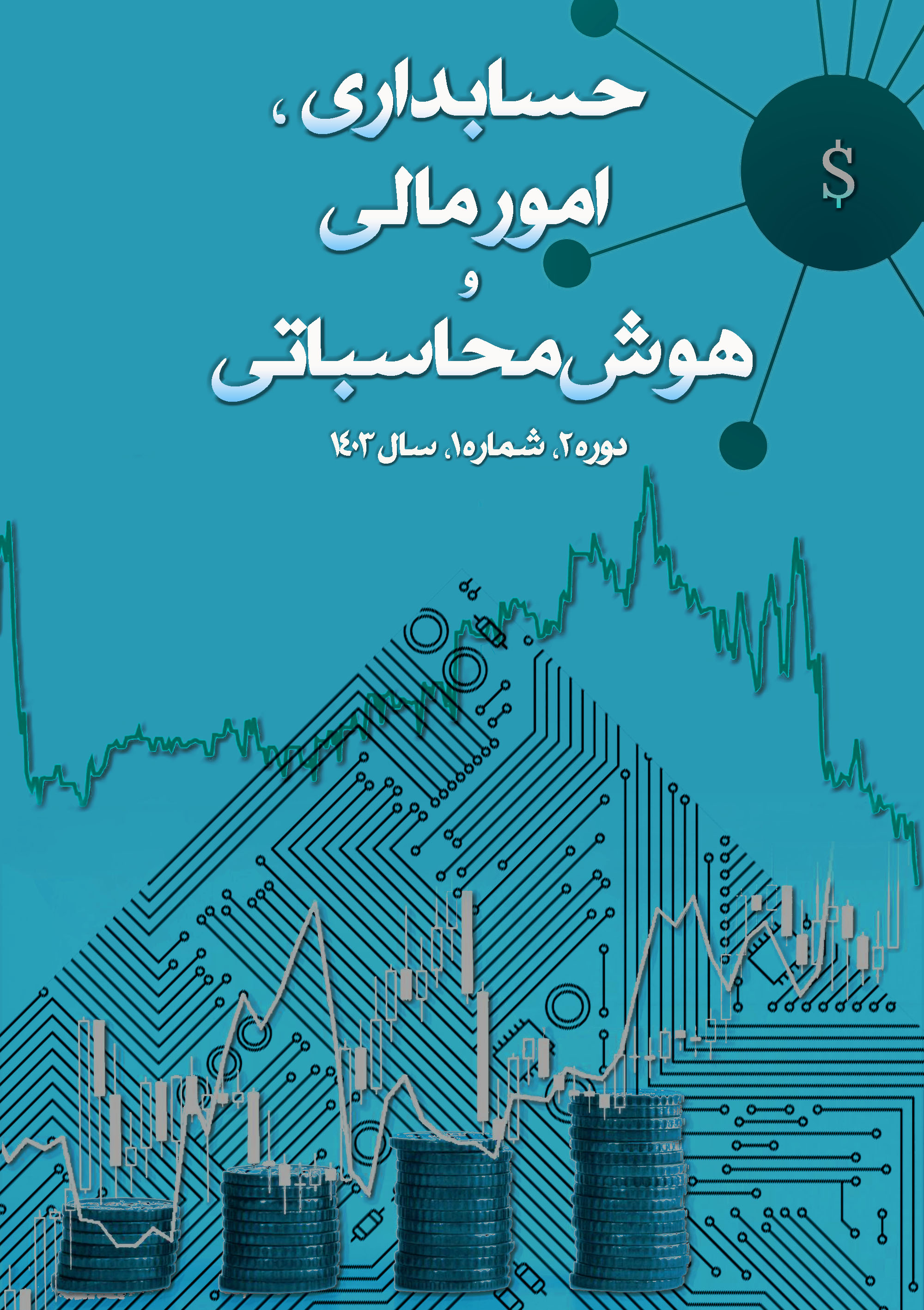Explaining the Post-Purchase Behavior Model to Enhance Profitability Using the Importance–Performance Analysis Approach
Keywords:
Post-purchase behavior, profitability, brand loyalty, importance-performance matrix, Iranian products, home appliance industryAbstract
The present study aims to explain the post-purchase behavior model with the objective of enhancing profitability, using the Importance–Performance Analysis (IPA) approach. This research is applied in nature, employs an exploratory-explanatory approach, and is conducted using qualitative methods. The statistical population consists of experts and professionals active in the home appliance industry, and a purposive snowball sampling technique was employed to select 10 participants for the study. To analyze the qualitative data obtained from interviews, content analysis and grounded theory methodology based on the Strauss and Corbin approach were applied, including open coding, axial coding, and selective coding. Based on this process, 25 components were identified and categorized under 9 main dimensions affecting the post-purchase behavior pattern of consumers of Iranian products aimed at improving profitability. The findings indicated that pre-purchase expectations and the perceived image of Iranian brands have a significant impact on post-purchase behavior, which in turn plays a key role in fostering loyalty to domestic brands. Furthermore, brand loyalty—mediated by contextual and intervening conditions such as social media and customer support—leads to both customer and corporate profitability. The Importance–Performance matrix analysis also revealed that variables such as social media and customer support services are in a favorable position in terms of both importance and performance. However, the variable "perceived image of Iranian brands," despite its high importance, shows relatively weak performance and requires strategic revision. Accordingly, reconfiguring the marketing system of domestic brands—by focusing on enhancing customer support services, redefining brand image, effectively managing social media, and adjusting consumer expectations—can pave the way for long-term and sustainable profitability in Iran’s competitive home appliance industry.
Downloads
References
Amininejad, I., Vazifehdoust, H., & Zamani Moghaddam, A. (2021). Explaining the Future Purchase Behavior Model of Home Appliance Buyers. Journal of Business Management Explorations, 13(25), 159-184.
Bagheri Gharehbolagh, H., Maleki Minbash Razgah, M., Feiz, D., Azar, A., & Zarei, A. (2021). A Reflection on Post-Purchase Cognitive Dissonance: Analyzing Factors Affecting Fashion Clothing Consumers' Purchasing Behavior. Business Management Perspective Journal, 20(45), 13-38.
Barney, J. B., & Hesterly, W. S. (2023). Strategic Management and Competitive Advantage: Concepts and Cases. Pearson.
Barta, S., Gurrea, R., & Carlos, F. (2023). The double side of flow in regret and product returns: Maximizers versus satisficers. International Journal of Information Management, 71, 102648. https://doi.org/10.1016/j.ijinfomgt.2023.102648
Bigmoradi, R., Rousta, A., & Doshman Ziyari, E. (2020). Explaining Customer Loyalty Based on Brand Personality in the Home Appliance Industry: A Qualitative Approach Based on Grounded Theory. Consumer Behavior Studies Journal, 7(1), 130-144.
Boley, B. B., Perren, C., White, E. M., & Green, G. T. (2025). Do residents really care to be empowered? Prioritizing empowerment through Importance Performance Analysis. Journal of Destination Marketing & Management, 37(4), 101017. https://doi.org/10.1016/j.jdmm.2025.101017
Dankwah, J. B., Kwakwa, P. A., & Nnindini, S. I. (2024). Why did I buy this? Examining the relationship between consumer ethnocentrism, celebrity endorsement and post-purchase regret. Cogent Business & Management, 11(1), 2381865. https://doi.org/10.1080/23311975.2024.2381865
Drury, C. (2022). Management and Cost Accounting. Cengage Learning.
Ebrahim, R., Ghoneim, A., Irani, Z., & Fan, Y. (2021). A brand preference and repurchase intention model: The role of consumer experience. Journal of Retailing and Consumer Services, 59, 102406.
Engle, C., Senten, J. v., Kumar, G., & Dey, M. (2023). Pre- and post-pandemic seafood purchasing behavior in the U.S. Aquaculture, 571, 739491. https://doi.org/10.1016/j.aquaculture.2023.739491
Graham, J. R., Harvey, C. R., & Rajgopal, S. (2023). Corporate financial policies and performance. Journal of Applied Corporate Finance, 35(2), 45-60. https://doi.org/10.1111/jacf.12582
Huong, V. T. M., Hung, N. P., Thuy, L. K., Duyen, L. T. N., & Minh, T. N. (2024). Factors affecting consumers' repurchase intention toward skin care cosmetics: A cross-sectional study in Vietnam. Heliyon, 10(11), e32285. https://doi.org/10.1016/j.heliyon.2024.e32285
Kim, Y., Lee, J., Park, S., Kwon, Y., Cheong, M. J., & Lee, J. H. (2025). Needs Assessment for Public Health Competency in Infection Prevention and Control: Importance and Performance Analysis (IPA) of Infectious Disease Response Practitioners. Journal of Korean medical science, 40(1), e23. https://doi.org/10.3346/jkms.2025.40.e23
Kotler, P., Keller, K. L., & Chernev, A. (2021). Marketing Management. Pearson.
Li, L., & Yuan, X. (2024). The influence of energy-saving information in online reviews on green home appliance purchase behavior based on machine learning. Energy and Buildings, 314, 114296. https://doi.org/10.1016/j.enbuild.2024.114296
Philp, M., & Nepomuceno, M. V. (2024). How reviews influence product usage post-purchase: An examination of video game playtime. Journal of Business Research, 172, 114456. https://doi.org/10.1016/j.jbusres.2023.114456
Ravazzoli, E., Dalla Torre, C., Labadini, A., & Maino, F. (2025). Stakeholders' feedback integration in spatial planning using Importance Performance Analysis: the case of the Provincial Strategic Plan of the Autonomous Province of Bolzano-South Tyrol (IT). Frontiers in Sustainable Cities, 7, Article 1394025. https://doi.org/10.3389/frsc.2025.1394025
Ross, S. A., Westerfield, R. W., & Jordan, B. D. (2022). Corporate Finance. McGraw-Hill Education.
Slack, N. J., Singh, G., & Sharma, M. (2020). The role of customer engagement in enhancing customer loyalty in the UK retail banking sector: the importance-performance map analysis. International Journal of Quality and Service Sciences, 12(4), 493-510. https://doi.org/10.1108/IJQSS-10-2019-0114
Sun, Y., Leng, K., & Xiong, H. (2022). Research on the influencing factors of consumers' green purchase behavior in the post-pandemic era. Journal of Retailing and Consumer Services, 69, 103118. https://doi.org/10.1016/j.jretconser.2022.103118
Wei, J., Zhong, Z., Arango-Aramburo, S., & Zhao, X. (2025). Exploring green electricity certificate purchasing behavior via a laboratory experiment. Renewable and Sustainable Energy Reviews, 215, 115527. https://doi.org/10.1016/j.rser.2025.115527
World, B. (2024). Global Economic Prospects: Fragile Recovery. World Bank Publications.
Downloads
Published
Submitted
Revised
Accepted
Issue
Section
License
Copyright (c) 2024 زینب شیخی مورچگانی, احمد عسکری, علی نوروزی مبارکه (نویسنده)

This work is licensed under a Creative Commons Attribution-NonCommercial 4.0 International License.










